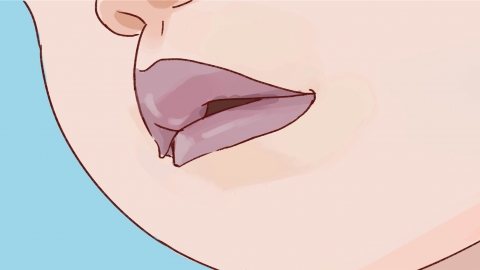Purple lips in men indicate possible health issues, such as poor circulation, respiratory problems, or cardiovascular diseases.
Generally speaking, there is no specific medical condition associated with purple lips in men. Purple lips in men may be caused by cold exposure, long-term smoking, anemia, pneumonia, chronic obstructive pulmonary disease (COPD), and other factors. If you experience any discomfort, please seek medical attention promptly and undergo symptomatic treatment under the guidance of a qualified physician. Detailed explanations are as follows:

1. Cold Exposure
When the body is exposed to cold environments, blood vessels on the body surface constrict to reduce heat loss, including those in the lips. Vasoconstriction slows blood flow, reduces oxygen content in the blood, and increases levels of reduced hemoglobin, causing the lips to appear purple. It is important to stay warm in cold conditions, dress appropriately, and wear masks to protect the lips.
2. Long-term Smoking
Harmful substances in cigarettes, such as nicotine, can cause vasoconstriction and reduce the blood's ability to transport oxygen. Additionally, carbon monoxide binds more strongly to hemoglobin than oxygen, reducing the amount of oxygen carried by hemoglobin, which can lead to purple lips. Smoking should be reduced or stopped altogether, and individuals should consume more foods rich in vitamin C to promote metabolism.
3. Anemia
Anemia may be caused by a lack of hematopoietic raw materials, impaired blood production, or blood loss. A decrease in red blood cells and hemoglobin leads to reduced oxygen transport capacity, causing tissue hypoxia and purple lips. Symptoms such as dizziness and fatigue may also occur. Patients can take medications like ferrous sulfate tablets, ferrous fumarate granules, and methylcobalamin tablets under a doctor's guidance.
4. Pneumonia
Pneumonia is commonly caused by infections such as bacteria, viruses, or mycoplasma. Lung inflammation can impair gas exchange, leading to insufficient oxygen intake and reduced blood oxygen levels, resulting in purple lips. Symptoms such as fever and chest pain may also occur. Patients can follow medical advice to use medications such as amoxicillin-clavulanate potassium tablets, cefuroxime axetil tablets, and azithromycin tablets for treatment.
5. Chronic Obstructive Pulmonary Disease (COPD)
COPD is often caused by air pollution and recurrent respiratory infections. It may lead to airway obstruction and impair ventilation and gas exchange functions, preventing oxygen from effectively entering the bloodstream and hindering carbon dioxide elimination, resulting in hypoxemia and carbon dioxide retention, which can cause purple lips. Symptoms such as coughing and sputum production may also occur. Patients can use medications such as salbutamol aerosol, ipratropium bromide aerosol, and aminophylline tablets under medical supervision.
In daily life, it is important to maintain a healthy lifestyle, ensure balanced nutrition, and consume adequate nutrients. Moderate physical exercise should be practiced to enhance physical fitness, improve tolerance, and boost immunity.





